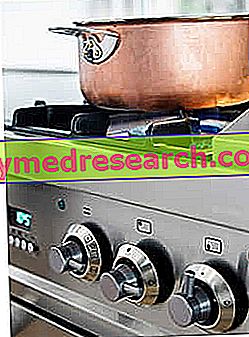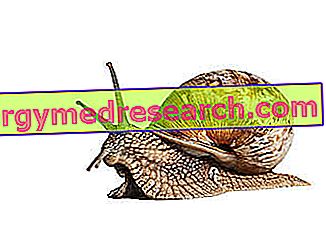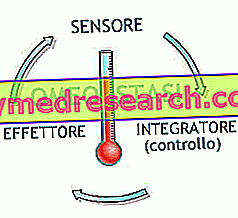Food cooking - methods, techniques or systems, principles

- heat-sensitive molecules are partially or completely destroyed
- the digestibility of some products is drastically reduced, increasing the times of gastric and intestinal stay.
Paradoxically, cooking is born with the intent to favor the digestibility of food and in fact, as we will see below, in these terms the appropriate use of heat on foods has an unquestionably POSITIVE effect.
Food cooking: positive aspects
Cooking food is an operation that has several advantages:
- Among these, the first is undoubtedly the transformation of foods that are NOT edible into EDIBLE; among these we mention: cereals, legumes and some vegetables and tubers such as asparagus, potatoes, aubergines, etc.
- Secondly, from the microbiological point of view, cooking food is able to make raw foods SAFER which, if not contaminated with Gram negative bacteria (-) or spores in general, gain healthiness and edibility after heat treatment .
- The cooking of food makes them more MASTICABLE and DIGERIBLE (except for the stews), an aspect not to be overlooked above all for feeding the hospital, geriatric, pediatric patients etc.
- The characteristic EXALTATION of the organoleptic and gustatory properties, which increases palatability and pleasantness, should not be overlooked either.
- Food cooking also has an inactivating effect on food-specific enzymes, BLOCKING DEGRADO INTRINSECO reactions and prolonging shelf life independently of the microbial load
Food cooking: negative aspects
Alas, cooking food also has negative aspects:
- As anticipated, cooking food reduces its nutritional value by DESTRUCTION of the thermolabile molecules and / or by DISPERSION of many others (especially mineral salts and microelements in general).
NB . In some cases, heat treatment can take on a role favoring the availability of some nutrients; examples are: 1. The inactivation of anti-nutritional components, such as avidin present in the egg white; 2. Activation of antioxidant molecules (see Maillard reaction in tomato).
- Last but not least, the formation of toxic and / or mutagenic DNA molecules such as: acrolein, formaldehyde, acrylamide and polycyclic aromatic hydrocarbons; it should be specified that not all cooking techniques involve raising the concentration of these toxic catabolites, but the systematic use of: grilling, barbecuing and frying can be highly harmful due to its carcinogenic potential .
Chemical and physical modifications obtained by cooking food
Through cooking, the foods undergo significant chemical-physical modifications, which result in profound organoleptic and nutritional alterations.
The organoleptic alteration is obtained mainly by:
- Color intensification and browning
- Aroma enhancement
- Weight reduction following dehydration
- Increase or decrease in digestibility
- Intensification and specificity of taste based on the cooking technique of food.
With regard to the alteration of the nutritional value, we recall that this depends mainly on the cooking technique used, since a longer duration and intensity of exposure to heat corresponds to a greater curtailment of thermolabile molecules and (potentially) also the liberation of toxic catabolites; similarly, when cooking by convection in water and oil there is a greater indiscriminate dispersion of nutrients compared to other techniques.



